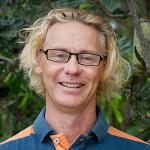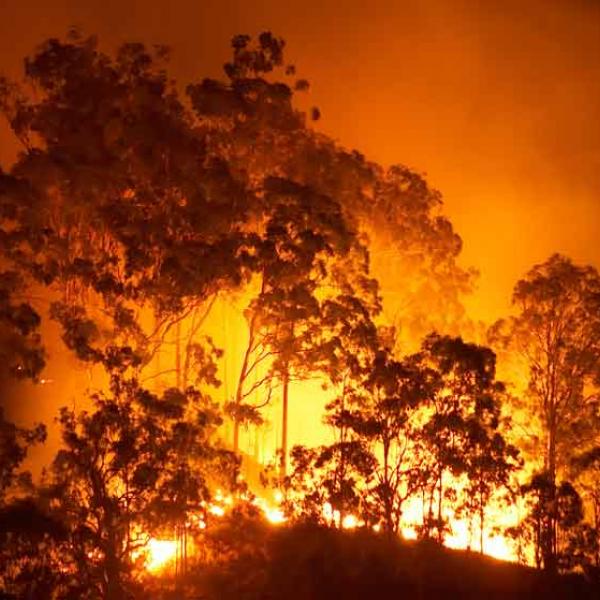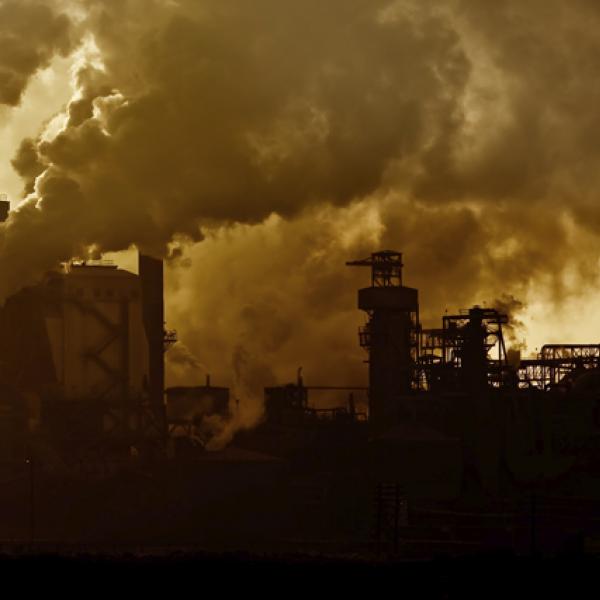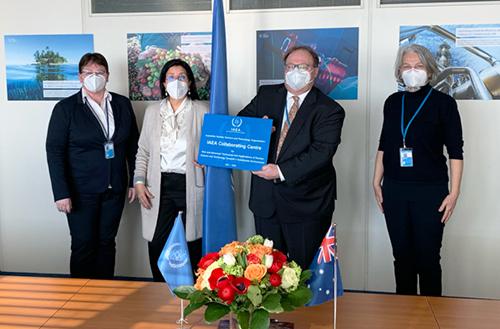
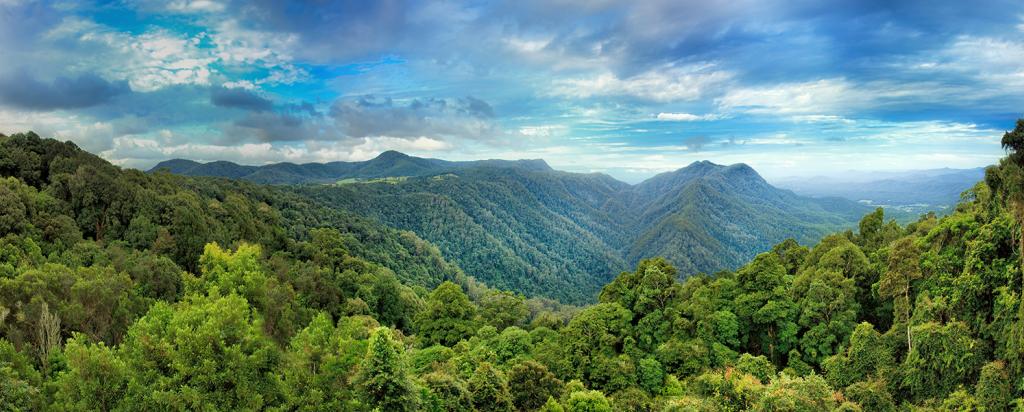
Published on the 8th April 2021 by ANSTO Staff
ANSTO has become an International Atomic Energy Agency (IAEA) Collaborating Centre to support IAEA activities using nuclear techniques for development and environmental protection.
Building on two past Collaborating Centres, the current Agreement is focused on a broad work plan that includes tackling provenance and the authentication of products of illicit trade; the use of isotopes to study water and climate change; the use of nuclear techniques to understand the impact of environmental and atmospheric pollutants and the use of nuclear and isotopic techniques to investigate art, archaeology and cultural heritage materials.
To mark the Agreement, the IAEA has provided ANSTO with a commemorative plaque that will be displayed in the reception building on the Lucas Heights campus.

(Left to right, Aliz Simon (IAEA), Najat Moktar (IAEA), H.E. Ambassador Richard Sadleir, Melissa Denecke (IAEA) at the plaque handover ceremony
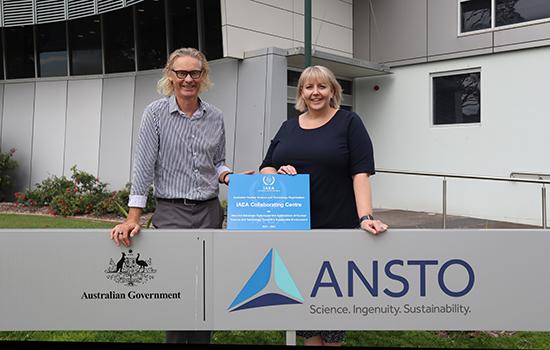
(Left to right) Prof Henk Heijnis and Dr Suzanne Hollins with the new plaque that will be displayed in the Reception Building at the Lucas Heights campus
The plaque was handed over at a ceremony in Vienna by Najat Mokhtar, Deputy Director-General, Department of Nuclear Sciences and Applications, IAEA, to H.E. Richard Sadleir, Australian Ambassador and Permanent Representative to the IAEA with Jarrod Powell, ANSTO’s Counsellor in Vienna in attendance. IAEA representatives will sign the official documents at this event, bringing the Collaborating Centre into effect. ANSTO will participate from the Lucas Heights campus and online.
Prof Henk Heijnis, Leader of Environmental research at ANSTO, is the Centre Director, will manage the implementation of the project.
Many activities will build on ANSTO’s long and proud history of participation in and support of IAEA Collaborative Research Projects and Technical Cooperation programme.
“There is strong alignment with many of our environmental research activities. It is an opportunity for us to share our significant learnings in areas which are global priorities,” said Heijnis.
As many nations are tackling illicit wildlife trade and food fraud, there is great interest in the innovative work that ANSTO has done in verifying the provenance of food and other products using isotopic techniques, X-ray fluorescence microscopy and theoretical modelling.
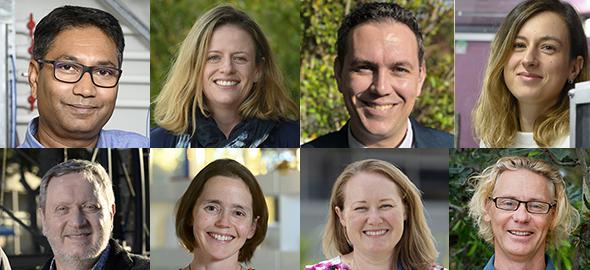
(Left to right, top row) Dr Debahish Mazumder, Dr Karina Meredith, Dr Tom Cresswell, Dr Floriana Salvemini (left to right, bottom row) Dr Alistair Williams, Dr Krystyna Saunders, Dr Rachel White and Prof Henk Heijnis
In addition to maintaining ongoing contributions relating to stable and radioactive isotope dating in rainfall, ANSTO will undertake training in using isotopes to study water and contribute to existing and new IAEA climate change projects.
As nuclear and isotopic techniques are very useful in investigating art, archaeology and cultural heritage, the project team is planning to introduce portable techniques for onsite analysis and will organise training and knowledge sharing among other activities.
Climate change takes in a wide variety of studies worldwide, but this project will focus on improving analytical and tracer methods to study climate and the environment.
ANSTO has considerable expertise in the use of nuclear techniques to study greenhouse gases, fingerprint atmospheric pollutants, and evaluate atmospheric transport models.
Project activities will also draw on ANSTO’s strong track record in understanding the impact of environmental pollutants.
Other ANSTO scientists who will act as leaders in specific areas include Dr Debashish Mazumder, Dr Karina Meredith, Dr Tom Cresswell, Dr Floriana Salvemini, Dr Alistair Williams, Dr Krystyna Saunders and Dr Rachel White.
